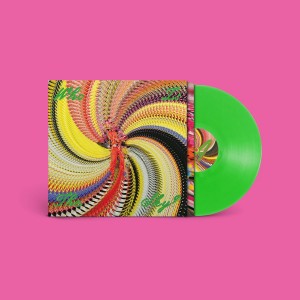
Moki Cherry: The Swedish Designer Who Integrated Art with Daily Life

Swedish artist and designer Moki Cherry had a boundless art practice that extended out to the literal walls of her daily existence. This fall, a retrospective at the Fabric Workshop and Museum (FWM) in Philadelphia will explore the breadth and scope of this kaleidoscopic and eclectic artist through her fiber works, costumes, ceramics, sound and video recordings, and other ephemera. The Living Temple: The World of Moki Cherry, opening September 25, will offer a rich look into a life deeply rooted in — and inseparable from — artmaking.
Born in 1943, Cherry maintained a thriving art practice from the mid-1960s up until her death in 2009 at the age of 66. She split time between Sweden and New York and collaborated frequently with her husband, the renowned American jazz trumpeter, bandleader, and composer Don Cherry.
Moki Cherry’s aesthetics and interest in cultivating wildly colorful, multi-sensory, and interactive spaces and experiences dovetailed perfectly with the rising counterculture of the ’60s, and the couple was known for creating celebratory “happenings” that involved music, performance, dance, singing, and freeform acts of expression over a couple of decades. The pair launched “Movement Incorporated,” a project bridging visual art and music, in 1967 (also the name of a free jazz album by Don Cherry, released in Sweden in 2005), and “Organic Music” — both of which described their far-ranging, genre-defying stage performances.
In addition to the fiber artworks, which were often used as staging or set pieces to backdrop performances, the FWM retrospective will present images of Moki and Don’s home life, replete with wildly painted walls, patterned floor cushions and rugs, and scenes of affectionate domestic chaos with their children, Neneh and Eagle Eye, both of whom went on to become musicians.
“Moki Cherry’s work feels more vital now than ever — not only as a radical fusion of art, music, and daily life, but as a deeply feminine and intuitive model of how to live in relationship — with one another, with the natural world, and with creative spirit,” Mark Christman, who co-curated the exhibition along with Danielle Jackson, told Hyperallergic.
“In a time of deep fragmentation, her vision reminds us that art can be sanctuary, resistance, and renewal all at once,” Christman added.
Alongside The Living Temple, FWM’s artist-in-residence Lisa Alvarado will present work that reflects strongly on the themes explored by Cherry, through the lens of her own roots and experiences as both an artist and musician. Talismans for a Theater of Resilience will combine Alvarado’s interests, which include fabric assemblage, screenprinting, and dyeing techniques she’s developed during her residency, to create a contemporary space that draws heavily on her perennial interest in memory.
“I consider how memory lives within us, how it’s passed down through the generations, absorbed and inherited,” said Alvarado, who is based in Chicago, in a statement shared by FWM.
Between the past highlighted in The Living Temple and the future imagined by Alvarado’s Theater of Resilience, the museum’s fall program promises to realize Moki Cherry’s vision of “home as stage, stage as home” in vivid color — in a much-needed escape from the present moment.